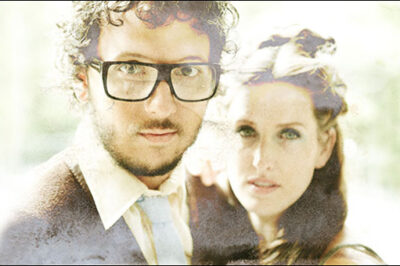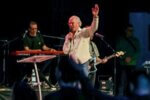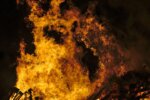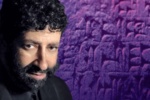To be human is to be creative, just like our Creator. But how we respond to this gift determines whether our art reflects Him.
What makes the tree continue to grow toward the sky? What drives the cells to give themselves full to your body’s creation and function? What holds the atoms together? If life is evolving, what is the pull that keeps life fighting to live, to reproduce? There is something. Something that keeps pulling. Drawing us like a magnet toward becoming.
God.
Perhaps God is not an old man in the sky but that which draws the sky to open up into reality. If God is infinite and Trinitarian and shall be all in all like the Christians have said for 2,000 years, then perhaps some of our perennial questions—“Why does God allow …?”—assume a juvenile view of God. Perhaps God is not the puppet master of the universe, but the future toward which the universe opens. Perhaps God is not the single subject watchmaker of the past that wound up the universe and let it play out on its own, but instead is the reality of the future into which all things live and move and come into being.
If this is true, then God is the ground of art. For from Him and through Him and to Him are all things (Rom. 11:36).
Art is the ordering of the becoming creation. It is the divine image within every human being—the joining of the Voice that sang, sings and will sing, “Let there be,” and that there was, there is and there shall be. Art is the imprint of our humanity on the created order—the echo of the divine image etched into the husks of trees and curvatures of electricity and light. It is our shadow cast upon the earth, our names scrawled in the wet cement of the universe, and even though the temporality of life ensures that the waves of time will wash clean the sand of all our castles, there is something within the human spirit that demands the effort. Our art is divine breath once again breathed into dust, and it is air worth breathing.
For me, this is the ledge of the canyon. This is the scenic overlook of why human beings create—the ground from which I can imagine and plant. This canyon is vast, and there is infinite work waiting to be done down in its valleys.
So to the artist, to the creator, I ask: How will you respond? How will you create?
It is a dangerous place—that place where you purposefully lift your head into the abyss of the unknown and let your voice harmonize with the constantly singing voice of the Creator. This place of creation is always riddled with risk. The ego trembles in knowledge of the countless eyes about to stare into your work—eyes of judgment, eagerness, jealousy, ridicule or joy. Creating is risky, and it can be painful.
This is part of why the artist must be rooted in love. Love can move you through the pain. Fear will only make you avoid it. It is in this precarious and sacred space that all great human accomplishment is created. To live in this space is dangerous, but it is exhilarating. It is freedom. It is life embraced with full arms and chest.
Our faith and intention determine whether the genius and power of this godlike ability to rule over creation—forming it, molding it however we wish—is used for good or evil. Some people fashion stone and earth into iPhones or love letters; others form the same basic materials into swords and atomic bombs.
Whether or not we create is not up to us. We are human, made in the image of our Creator, and creating is what we do. Every interaction, movement and decision is creativity at work.
We are all artists. We all order creation around us into the world that we want to make. All work speaks from something and to something. But what our work speaks to, what we create, what it leads people to worship—that much is left in our hands.
Will you create in a way that brings beauty into the world? Or ugliness? Life or death? Heaven or hell? Will people respond with worship to God, to the creation or to themselves?
Because when you’ve chosen your soil, the planting can finally begin. The artist must come to a place where she moves beyond the philosophies and mysticality of art and into the craft of it.
Steven Pressfield writes of the artist in The War of Art, “She understands that all creative endeavor is holy, but she doesn’t dwell on it. She knows if she thinks about that too much, it will paralyze her. So she concentrates on technique.”
Our art is holy. The proper response to such an idea is not to let these ideas stay on the level of theory. That would be like a man reminding himself of his love for his wife only so he could sit around and read romance novels all day. His remembrance ought to lead him to her physical embrace.
The philosophy of romantic love is best expressed in longing glances and kisses. The philosophy of art is best expressed with paint on your face and dirt under your fingernails.
A worship leader since age 12, Michael Gungor is the leader and producer of the Grammy-nominated musical collective called Gungor. He is also the author of a book called The Crowd, the Critic, and the Muse: A Book for Creators, from which this article was adapted.







Leave a Comment
You must be logged in to post a comment.